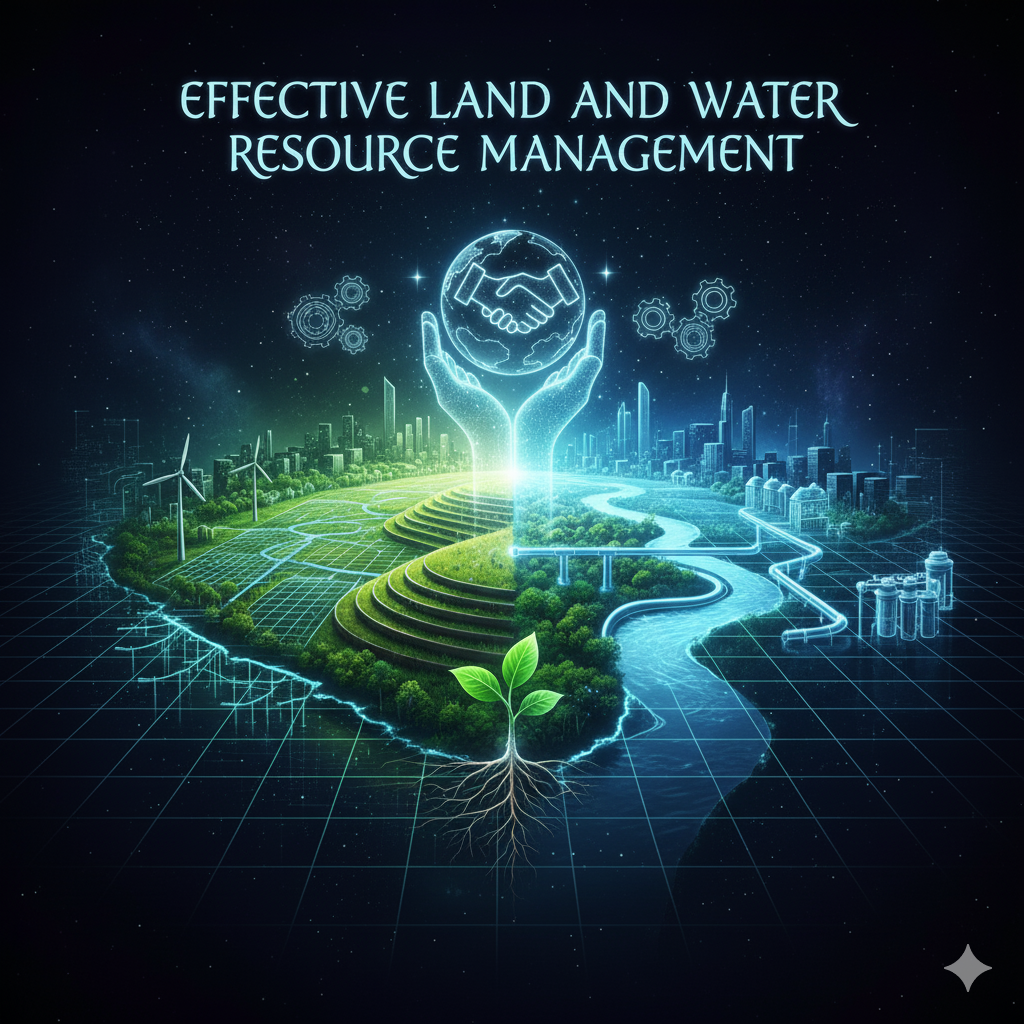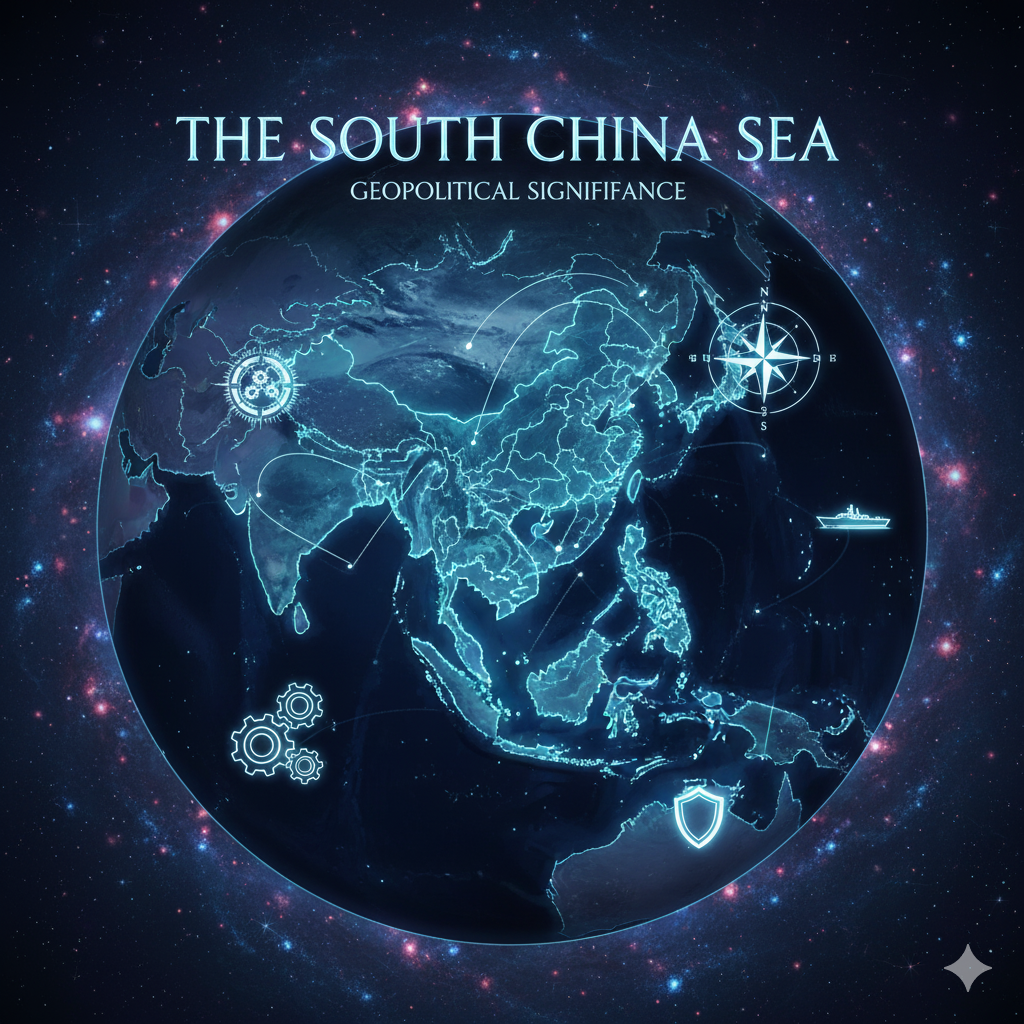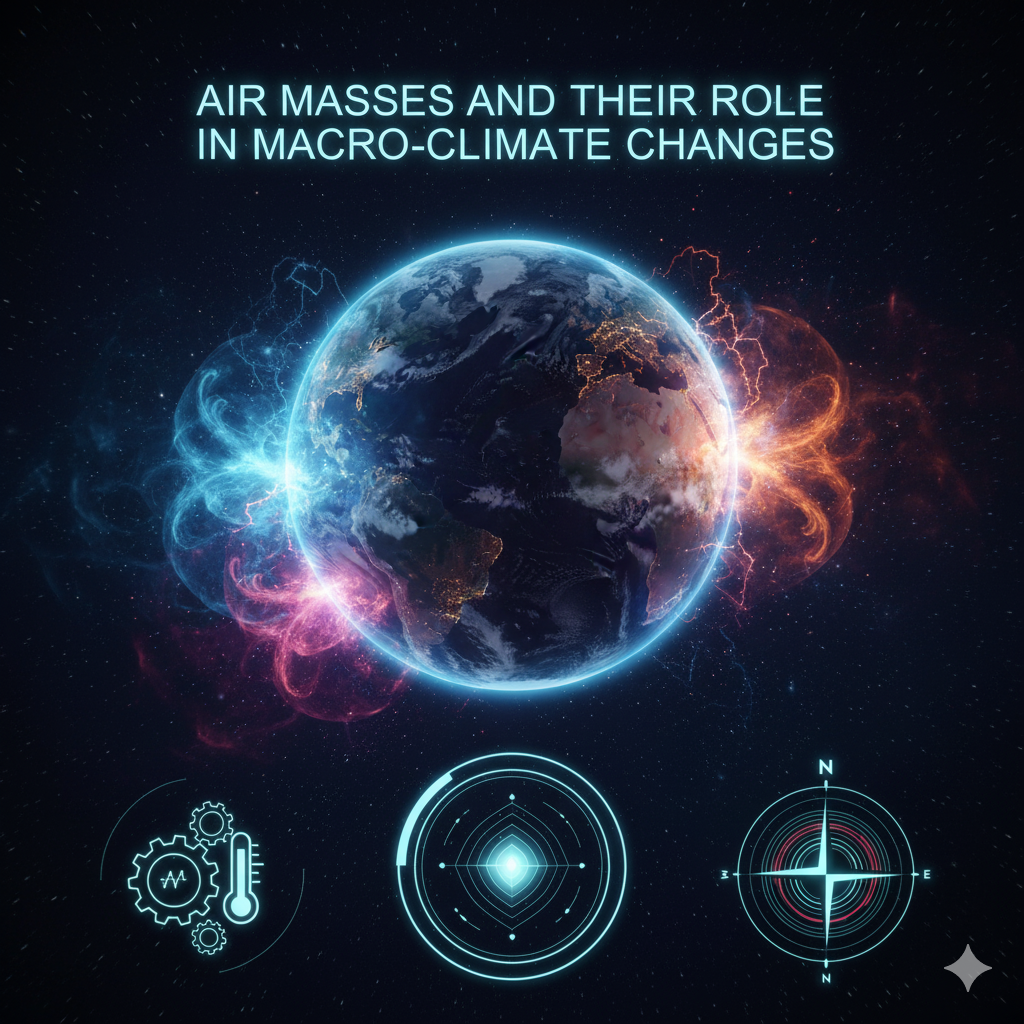The effective management of land and water resources plays a central role in alleviating poverty, reducing disasters, improving food security, and ensuring environmental sustainability. It is widely recognized that a mismanagement of these resources is at the core of many human miseries ranging from drought and famine to displacement, economic instability, and conflict. A systematic approach to managing these resources not only secures the present but also safeguards future generations from growing vulnerabilities.
Introduction
Human civilization has always been deeply dependent on the resources of land and water. Land provides space for habitation, agriculture, industry, and biodiversity, while water is vital for drinking, sanitation, irrigation, energy generation, and ecological balance. However, population growth, industrial development, urbanization, and climate change have exerted immense pressure on these resources. Mismanagement of land and water has often aggravated human miseries in the form of floods, droughts, famines, land degradation, unsafe drinking water, food shortages, and pollution-related diseases.
Effective management of land and water resources is therefore not just an environmental necessity but also a social, economic, and moral obligation. It contributes to poverty eradication, sustainable livelihoods, disaster reduction, health improvements, and environmental stability. This essay explores in detail how land and water management can drastically reduce human suffering.
Importance of Land and Water as Vital Resources
Land
- Land is a finite resource that supports agriculture, biodiversity, forests, human settlements, and industries.
- Healthy land ensures food security, forest resources, livelihoods for millions, and ecological balance.
- Land degradation through deforestation, overgrazing, and unsustainable farming threatens both rural and urban populations.
Water
- Water forms the basis of life, health, and sanitation.
- Agriculture consumes about 70% of global freshwater, making irrigation management critical.
- Freshwater availability continues to decline due to pollution, climate change, and over-extraction.
Both resources are interdependent. Degraded land reduces water infiltration, leading to floods and droughts, while poorly managed water intensifies soil erosion and desertification.
Causes of Land and Water Mismanagement
- Deforestation – Excessive clearing of forests for timber, agriculture, and urban expansion removes natural barriers against soil erosion and disrupts rainfall patterns.
- Overgrazing – Uncontrolled livestock grazing leads to land degradation, soil erosion, and loss of fertility.
- Intensive Agriculture – Excessive use of chemical fertilizers, pesticides, and groundwater depletes land and contaminates water sources.
- Urbanization – Rapid urban growth consumes fertile land while increasing demand for water beyond sustainable limits.
- Industrial Pollution – Factories discharge harmful chemicals into rivers and lakes, polluting drinking water and destroying aquatic ecosystems.
- Climate Change – Altered rainfall patterns, glacial melting, and rising temperatures exacerbate water scarcity and land degradation.
- Poor Governance – Lack of integrated policies, corruption, and insufficient community participation intensify resource mismanagement.
Human Miseries Caused by Poor Management of Resources
- Droughts and Famines
- Inefficient irrigation and deforestation contribute to water shortages.
- Drought leads to agricultural failure and famine, creating hunger and malnutrition.
- Floods and Soil Erosion
- Deforestation reduces natural absorbent cover, increasing runoff and flooding.
- Improper land use and blocked water channels worsen flood impacts, displacing communities.
- Desertification
- Overuse of land and excessive irrigation in arid zones depletes groundwater and makes soil saline.
- Expanding deserts engulf once fertile lands, destroying livelihoods.
- Health Hazards
- Polluted water spreads waterborne diseases like cholera, typhoid, and dysentery.
- Toxic industrial waste and pesticide residues enter food and water chains.
- Conflict and Migration
- Competition over scarce water and fertile land triggers conflicts between regions and nations.
- Mass migrations due to environmental degradation create humanitarian crises.
- Economic Losses
- Agricultural failures force reliance on imports, affecting national food security.
- Costs of disaster recovery, medical treatment, and relief increase economic burdens.
Effective Management of Land Resources
Sustainable Agriculture
- Employing crop rotation, mixed cropping, organic farming, and integrated pest management to maintain soil fertility.
Soil Conservation
- Techniques include contour plowing, terracing, strip farming, and shelter belts to reduce erosion.
- Afforestation on degraded lands prevents further soil loss.
Land-Use Planning
- Rational allocation of land for agriculture, housing, industries, and forests based on ecological suitability.
Prevention of Desertification
- Planting drought-resistant crops, using drip irrigation, and adopting agroforestry practices.
Rehabilitation of Degraded Land
- Reforestation, wetland restoration, and reclamation of mined land can restore ecological balance.
Effective Management of Water Resources
Rainwater Harvesting
- Collection and storage of rainwater helps recharge aquifers and reduces dependency on external water bodies.
Efficient Irrigation
- Use of drip and sprinkler systems instead of traditional flood irrigation ensures reduced water wastage.
Watershed Management
- Integrated development of land, vegetation, and water to conserve soil moisture and replenish groundwater.
Water Recycling and Reuse
- Treatment of wastewater for agriculture and industry reduces pressure on freshwater sources.
River Basin Management
- Coordinated management among states and regions sharing rivers avoids conflicts and ensures sustainable use.
Pollution Control
- Enforcing strict industrial laws, sewage treatment, and community awareness can make surface and groundwater safer.
Role of Technology in Resource Management
- Remote Sensing & GIS: Helps in mapping land-use patterns, soil types, and water resources for better planning.
- Desalination Technology: Converts seawater into freshwater to reduce scarcity in coastal regions.
- Artificial Intelligence: Predicts rainfall, manages irrigation scheduling, and reduces crop water use.
- Smart Irrigation Sensors: Enable farmers to apply optimal water levels based on soil moisture data.
Case Studies of Success
Israel
- Adopted advanced drip irrigation techniques that maximize agricultural output while conserving water resources.
China (Loess Plateau Project)
- Through soil conservation, reforestation, and terraces, barren lands were converted into fertile valleys, lifting millions out of poverty.
India (Water Harvesting in Rajasthan)
- Community-led construction of check dams and rainwater harvesting revived dried rivers and reduced rural distress.
Environmental and Social Benefits
- Food Security – Sustainable land and water use ensures stable agricultural yields.
- Health Improvement – Reduction in pollution and disease vectors improves community well-being.
- Economic Upliftment – Increased productivity creates rural employment and supports industrial growth.
- Disaster Mitigation – Controlled flooding, drought-proofing, and reduced desertification protect vulnerable populations.
- Sustainability – Ensures that resources meet present needs without compromising the future.
Role of Government and Policy
- Implementing strict regulations against industrial pollution and illegal encroachments on fertile land.
- Promoting subsidies for drip irrigation, rainwater harvesting, and organic farming.
- Encouraging public-private partnerships in resource management.
- Creating awareness programs in schools, communities, and rural areas.
- Transboundary cooperation on shared rivers to avoid disputes.
Community Participation
- Local communities play a direct role in resource conservation. Their indigenous knowledge about forests, rivers, and soil management is invaluable.
- Social organizations, self-help groups, and NGOs must be encouraged to participate in water and land projects for long-term success.
Challenges in Implementation
- Population pressure and growing demand for urban land.
- Poor enforcement of existing laws and weak governance.
- Climate unpredictability making planning difficult.
- Resistance from industries dependent on over-extraction of resources.
- Lack of awareness and educational outreach in rural areas.
Conclusion
The effective management of land and water resources is a cornerstone of human survival and progress. Mismanagement breeds hunger, poverty, disease, conflict, and displacement—magnifying human suffering. Conversely, sustainable management ensures food security, clean water, healthy ecosystems, disaster resilience, and social harmony. By combining modern technology, scientific policies, traditional knowledge, and community participation, societies can mitigate human miseries and create a sustainable future.
The choice before humanity is stark: continue with unsustainable exploitation and suffer escalating miseries, or adopt responsible land and water management to ensure growth, equity, and well-being. Effective management is not optional—it is essential for human dignity and survival.




